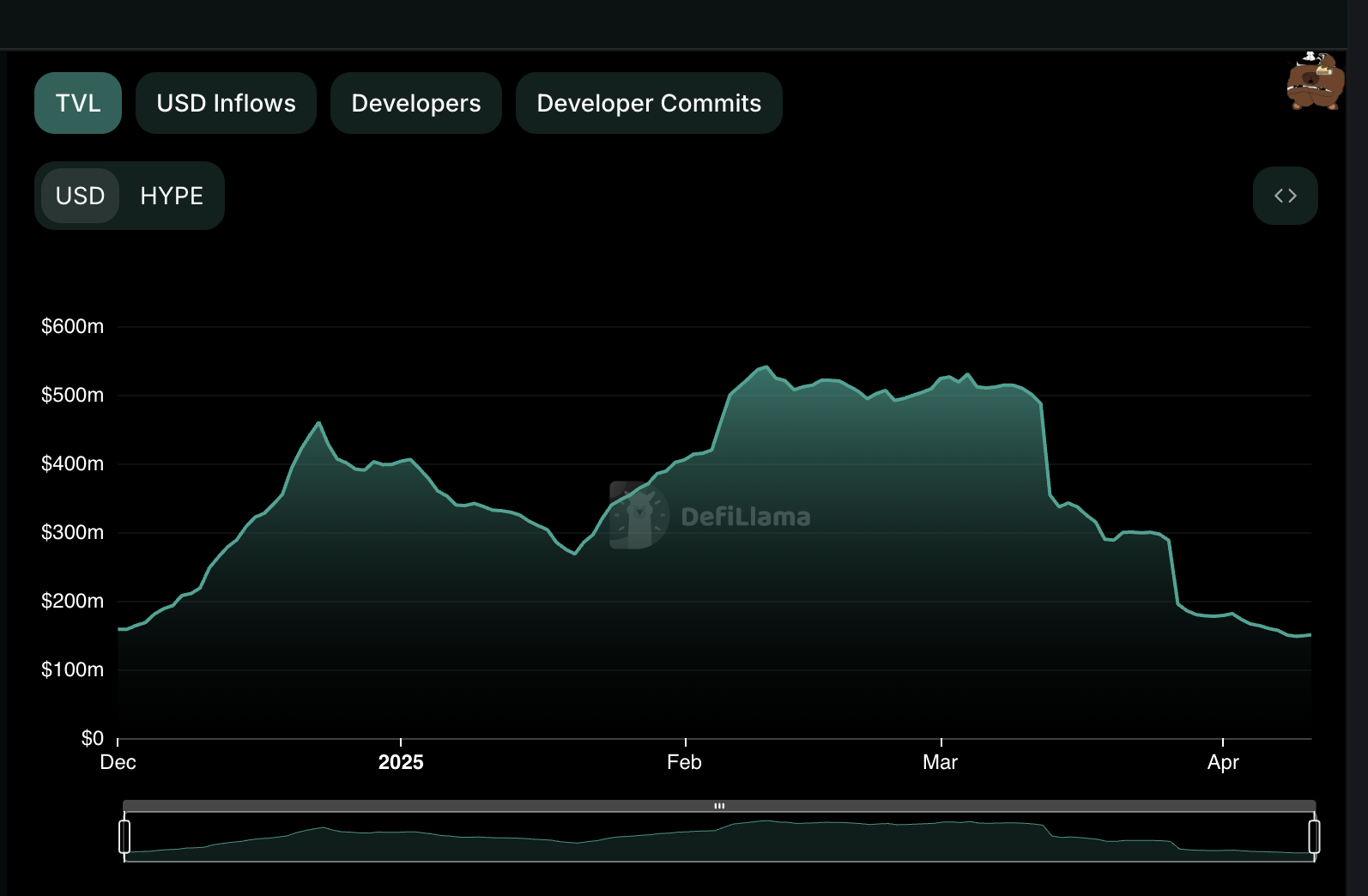
Key Highlights:
- The total value locked (TVL) in HyperLiquid’s vault has fallen from $540 million to $150 million in just a month.
- This capital exodus is a result of the JELLY trading incident, which ended in a delisting of the token, raising red flags over centralization issues.
- Experts indicated that HyperLiquid’s handling of the exploit was a significant contributor to concerns regarding its decentralization.
Just two months prior, HyperLiquid, a decentralized derivatives exchange (DEX), saw its TVL reach an all-time high of $540 million. Now, however, users are abandoning the platform, with the TVL now at $150 million and yields dropping as low as 1%, which is less than traditional bank savings yields.
Understanding the Exploit
The trouble began with an exploit where an individual manipulated the price of JELLY, resulting in a loss for the HyperLiquid vault, referred to as the Hyperliquidity Provider. However, the primary concern was not the negative profits from this situation but how HyperLiquid responded, triggering doubts about their decentralization efforts.
The manipulative action involved the user short-selling JELLY on HyperLiquid, coupled with purchasing tokens on less liquid decentralized exchanges. The lack of liquidity misled the pricing oracle to communicate inflated prices to HyperLiquid, ultimately placing the vault in a detrimental financial position.
In reaction to these events, the exchange decided to delist JELLY, settling at a price below the actual market rate, which erased the vault’s paper losses while stirring up fears about its centralized control, contrasting its decentralized promises. Corey Hoffstein, CEO of Newfound Research, publicly questioned the legality of HyperLiquid’s tactics during this crisis and outrage filled social media platforms.
Some industry professionals believe that the exploit showcased fundamental flaws in HyperLiquid’s approach. Jan Philipp Fritsche, Managing Director at Oak Security, asserted that it was an indicative case of unaddressed volatility risks. Furthermore, an investigation indicated that similar issues had been flagged in prior audits, highlighting the necessity for enhanced awareness and mitigation of economic vulnerabilities in trading environments.
HyperLiquid has since attempted to counteract these centralization concerns by introducing an on-chain validator system for asset delisting votes, ensuring future decisions cannot be made unilaterally.
Trading Volume Remains Stable Despite Token Decline
While the vault’s reputation has taken a hit, the exchange itself continues to perform well in terms of trading volume, boasting over $70 billion in transactions this month — potentially reaching or surpassing January’s record of $197 billion. However, their native token, HYPE, has experienced a 60% loss in value over the last four months, shrinking its market cap from $9.7 billion to $4.6 billion.



